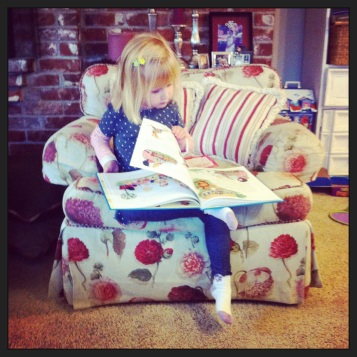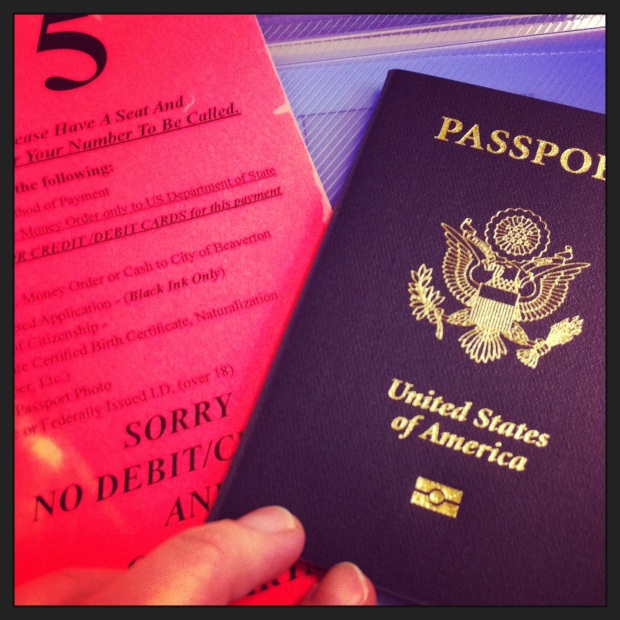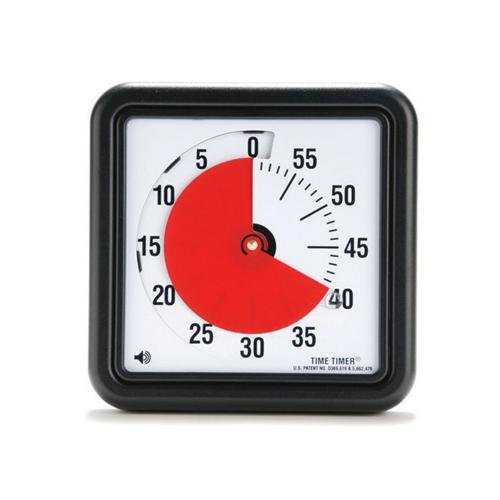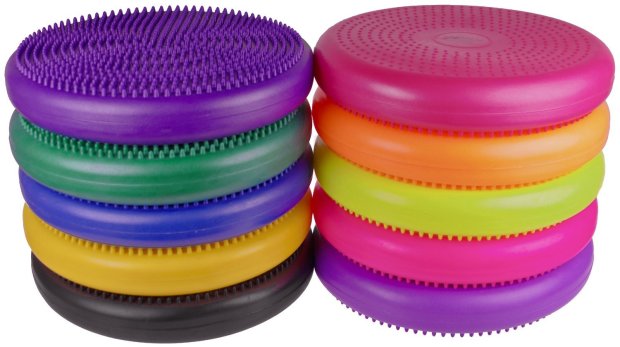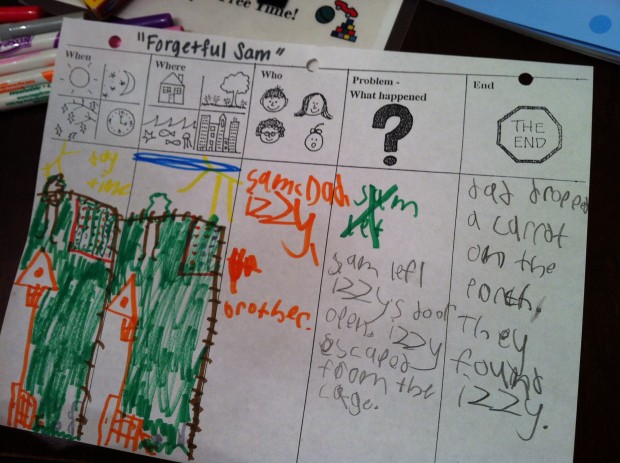It’s been awhile since I’ve updated this blog. I am currently adding more posts about communication, learning, and play at Koning Speech and Language. Come over and check it out! There are archives to all these posts, as well. For archives, click www.koningspeechandlanguage.com/kids-communicate/
‘Time-Outs’ Are Hurting Your Child
While I agree with some of this, I do think there are times when you need to separate the child from the situation, calm yourself down, then rejoin your child to discuss the behavior. Children can quickly escalate our internal dysregulation, so it is important to recognize what is happening inside of you. Using words to describe your internal state can help model for your child: “I’m feeling frustrated. I need a moment alone to calm down.”
How to encourage a discouraged reader:
Think of reading as a means to an end. It is just a way to absorb information. We want children to develop a love for reading by realizing there are imaginative worlds, far-off galaxies, crazy characters, and intriguing plotlines contained within those two hard covers. Reading is also our access to information. Without it, we cannot read our emails, read about the latest scientific discovery, or keep updated on the news in our town. But when your child comes off the starting line as a resistant, reluctant, or troubled reader, it can be like pulling teeth to improve this vital skill. For those children struggling with dyslexia and reading comprehension, it’s no wonder that reading is such a chore. It just isn’t fun! Reading is hard work from the start, so our job as parents and educators is to bring some fun back into the equation, teach in a relaxed and effective way, and show our children why working hard is the means to a wonderful end.
Here are some quick tips to encourage your reluctant reader at home:
1. Books on tape. Some kids need the auditory input to stay engaged. Use a book on tape and let them follow along with the story.
2. Keep reading aloud. Even if your child can read on their own, they still need time every day to just listen as you read. Pick a high-interest book with a great storyline and read it together. “Harry Potter”, Laura Ingalls Wilder books, “Ender’s Game”, “Ivy and Bean”… all of these stories can capture the imagination.
3. Switch off reading. You do a page, I’ll do a page. No pressure, you get a break while I read. I help you with a word if you are struggling too much.
4. Comic books, magazines, recipes, instructions on how to fix something… These all count as reading and may serve as a catalyst for encouraging your reluctant reader. I worked with a student who narrated out the instructions to his Star Wars Lego kit. He then read the instructions to his brother.
Mini-articles online about Minecraft (http://www.minecraftinfo.com/Articles.htm).
Pen pal letters to a cousin.
It doesn’t have to be Shakespeare, and we are encouraging reading for enjoyment.
5. Lastly, use music. Use the words to a favorite song, look up lyrics online, or create a rap about something your child enjoys doing. Music can bridge the phonological processing and fluency difficulties a child may have.
Five Ways to Use Drinking Straws
Need a winter day activity for your kiddo? Read on!
Straws are a fun and affordable way to develop fine motor skills such as cutting and stringing. Straws also can be used for fun tabletop games or for arts and crafts.
View original post 218 more words
How Do I Teach My Child to Advocate for Themselves?
One of the hardest (and most rewarding) things for a parent is watching your child brave new situations alone.
Without you by their side, it can be challenging for them to learn to advocate for themselves. Some children come more naturally to these skills, but many have to learn them slowly and systematically through experience. It can be the difference, however, of sitting and staring blankly at a test with no solution in sight, or raising a hand and asking a teacher to clarify a question. 
Self-advocacy can mean that your child writes an assignment down completely and then checks in with the teacher at the end of class to make sure all the assignments are copied correctly. It can help them take control of any struggles they may face, accept their learning challenges, and find ways to navigate their school experience.
Below is a quick list of ways to work on self-advocacy with your child. As I discuss self-advocacy with my students, I always follow up with the benefits of looking out for yourself. That being better organized and on-top of our assignments and tests is a win-win situation. By taking control of our needs and becoming more efficient with our time, we condense the time we have to spend on homework and other tasks, opening up more time for free time and play.
- Work with your child’s teacher. Sure, all our teachers are busy, but they want what’s best for your child. If your child needs a more structured system, work with them on ways to achieve it.
- Role play. I can’t say enough about rehearsing possible situations that may arise in the comfort of your own home, while your child is relaxed. Make it a priority to discuss with them different ways we can ask for help when confused or upset.
- Practice. Self-advocacy at school can be practiced early on, when you are present. Have a question in pre-k or kindergarten about what snack to bring? Encourage your child to ask their teacher for help, with you behind them. Let them be their own advocate.
- Encourage your child to be specific. Requesting additional time on a test to work through problems is more specific and focused (and an easier thing for a teacher to allow) than just saying “I don’t know” or leaving answers blank. I’ve met many children who get test anxiety and draw a blank, leaving answers empty and throwing in the towel. Many children don’t do well with timed assignments, and most teachers are willing to work with them for a solution. After all, they’d often rather test knowledge than speed (exceptions might be fluency tests and state-mandated testing). But it’s helpful for a teacher to know specifically how to help, with extra time for assignments, more clarification for long division, or a book on tape so a child can listen and read. Your child can practice with their teacher on how to answer parts of questions, skip questions and come back, and maintain a rhythm through testing.
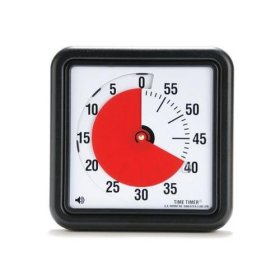 After all, a child who self-advocates becomes a college student or young adult who can independently navigate the complexities of adult life. Just this morning I worked on my own self-advocacy (and self-control) skills calling Comcast for the 4th time in two weeks about incorrect billing charges! 😉
After all, a child who self-advocates becomes a college student or young adult who can independently navigate the complexities of adult life. Just this morning I worked on my own self-advocacy (and self-control) skills calling Comcast for the 4th time in two weeks about incorrect billing charges! 😉
Self-advocacy means independence and confidence, and allows your child to feel in control of their academic success. It’s that peace of mind that is essential, as self-confidence can make all the difference in school achievement.
Avoiding the ‘Container Shuffle’ with your Baby
Avoiding the Container Shuffle!
Guest post by: Nicole M Sergent, MPT
As a new parent, I was there. Giddy excitement over the news of a baby on the way followed by showering love from family and friends in the form of gift, and gifts, and more gifts. At the time I was touched (and am still forever grateful for their generosity) but shortly after the baby came I quickly fell into a routine many new moms do. As a physical therapist, I like to call it, “the container shuffle.”
“The container shuffle” goes something like this. Sleep (crib), eat (highchair), play (exercsaucer), calm down (bouncer seat), sleep (crib), eat (highchair), play (positioning seat), calm down (swing) etc. As a mother, I related to the thoughts many of my patients’ parents have. Everyone buys us all this stuff…and baby likes them and is happy…so why not use them? As a therapist, I’d like…
View original post 587 more words
Running on Highways
This past weekend I joined a group of moms from Southern California to run a 205-mile relay from San Francisco to Napa, California. The promise of wine-tasting and 48 hours of family-free time was enough to get me to agree to something so crazy. Our team name was R.I.O.T. Moms, with the acronym for “Running Is Our Therapy” a fitting description for how exercise and outdoor time can rejuvenate even the weariest of parents.
The past couple of months have reaffirmed my own parenting journey. My husband and I sold our house in the Pacific Northwest, closed up shop on our jobs, and headed south with kids and dog in tow to relocate to the San Francisco Bay Area. The promise of good weather and time to focus on family was all we needed to make the jump to a new adventure. Throughout this transition, which included my oldest starting kindergarten, my kids have been relying on each other and my husband and I in new ways. Amidst the uncertainty they often look to mom and dad for stability, and that trust can be both reassuring and draining. I’ve been practicing some meditation techniques, channeling my inner calm, so when the chaos threatens to take over – one child is crying, another is telling a loud story, the dog is barking, the dinner on the stove boiling over – I can take a deep breath and keep my core calm and regulated.
Children feed off our nerves. A child who easily becomes dysregulated is looking for outside sources of strength to bump up against. Sometimes, this is figurative – needing a calm presence to reflect back to them the way to cope with a situation. And sometimes they actually ARE bumping into things – crashing into you, into their sibling, hitting walls, or tripping over their own feet – to seek some sort of barrier or boundary to the chaos coursing through them. How we react – kneeling down, modeling deep breaths and quiet words, giving hugs and pressure squeezes when needed, reflecting their emotions with words and simple phrases – can mean continued shouting and tears, or a de-escalation of the situation.
Running a relay takes you on beautiful trails through the woods, winding streets coursing through quaint little towns, and hot, gravely highways with semi-trucks roaring past. I have a hard time on those highways, thinking I have little shoulder to run on, my footing irregular and my temperature rising. The sound from the trucks can be overwhelming, moving me to frustrated tears if I let it. A dysregulated child feels the same. Senses on overload, fear of the unknown driving action, uncertainty of how to proceed. For many of our children, being unable to get the train pieces to fit together, or an incessantly itchy tag bothering their neck, is all that is needed to get on that chaotic highway.
I worked on my meditation techniques during those miles. The face of calm on the inside. Ironic, since I probably looked a hot mess on the outside. Breathing, keeping my blood pressure at a steady state. Visualizing my end goal and the steps to get there. Using my thoughts and words to channel chaotic emotions. These all mirror many of the strategies we use with children to help them regulate their bodies. Self-soothing strategies are lifelong lessons we can teach, to deal with frustration, chaos, and situations outside of our control. Check out more links below to strategies you can use at home…
And a big “thank you” to my fellow RIOT Moms, who persevered with me! 205 miles ain’t got nothing on us!
Pack Your Bags!
Traveling with the kiddos…
I think as parents we build up our nervous anticipation of traveling with kids. Usually, trips go more smoothly than we predict they will, and the (sometimes literal) gross disasters are fodder for years of family stories to come.
And what better way to educate our children than to travel? For it is through travel that we see new sights and sounds, eat new foods, experience new cultures, and push our comfort level. Our children learn to occupy themselves when bored, become comfortable with their own thoughts and imagination, and communicate with others in a whole new way.
Travel can be as simple as a road trip around your state. Each town has a unique personality to meet along the way. An airplane flight to a neighboring state to visit grandparents teaches children how to wait patiently, how to follow oral directions, how to read signs and posters, and how to find gate numbers. What better way to get hands-on learning?
Your children experience new people with all that people-watching: new mannerisms, new ways of dressing, and overhear conversations on novel topics. What could be a better “classroom” lesson for the day?
When schedules allow, it isn’t hard to get away for a weekend. I believe prioritizing your child’s education, as we all do, includes these rich experiences. Patience, flexibility, and fortitude are lessons taught remarkably well on the road. As parents, we can prepare our children for the journey ahead, knowing full well that hiccups will occur, but they often won’t be something we can’t handle.
Here are a few things to try on your next adventure:
- Talk with your child about expectations and what the traveling will be like. Kids do well with a framework on which to map their experiences.
- Allow extra time to pull them aside, out of the hustle and bustle, and explain what is happening next. Before you go through the security gate at an airport, for example, take them aside and kneel down, telling them what to expect in the next few moments.
- Help them use their eyes and ears to observe the world around them. Give them a visual scavenger hunt (like “I Spy”) or pictures in their journal to find and draw. For an upcoming trip, I’m printing photos from the internet and sticking them inside journals. My daughters will be able to use the pictures to identify important landmarks and historical monuments. They can color or write their own ideas, too!
- If your child has special needs, they will need some accommodations in your plans. But even our special kids need these experiences. Plan ahead and bring some fallback comfort items to keep them at ease. They will respond well to your energy level, so take a deep breath and meet them where they are at.
You can find all sorts of great suggestions on the internet for travel-specific tips and tricks for kids. Use what works for you, discard things that don’t. But by focusing on the actual travel as a learning experience, you can see the experience through your child’s eyes and focus your attention there.
Where will your next trip take you? Do you have a great kid-friendly travel experience to share? Leave a comment below and let us know how you did it!
*My family and I are heading on a road trip soon to visit a new baby niece. I’ll take my girls on a plane flight to visit grandparents for spring break, while my husband stays behind. Our girls have proven themselves good little travelers, other than the occasional baby explosion, so we’ll put them and their potty-trained backsides to the test on an international trip in late spring. I will let you know how it goes!
Homework Tips and Tricks
*Let me just say this. I am not a big fan of lots of homework. I think it is redundant and unnecessary for many students, and for others can completely strangle their love of learning. I think there is a time and place for completing an assignment that couldn’t be completed during the day, or working extra on a long-term project. But I think our education system in general has gone the wrong way with homework. Struggling students can spend three hours a day in early elementary school tackling their homework, and their systems are already fatigued from a full day of school. It is not unusual for the middle school students I work with to spend five hours in the evening completing homework.
That being said, I encourage parents to help their children find a balance. Encourage quality over quantity, and keep in close communication with teachers to determine what is necessary for your child. Good teachers understand this balance, and while they can’t change what’s required on state testing, they are usually very willing to work with a student on a bit of balance.
After a long school day, it can be difficult for children to sit down and tackle their homework. Make sure they have eaten a snack and exercised outside, and then use an analogue clock or a Time Timer to allow for short bursts of homework activity. For early elementary students, try 10-20 minute work sessions; for older students, try 20-30 minute work sessions. (I always recommend analogue clocks rather than digital clocks to help your student understand the passing of time, rather than just a single moment in time.) The Time Timer is helpful because it shows a countdown of time in bold red, so even preschool students are aware of time passing.
Is your child having trouble sitting in one place for homework? Make sure they have exercised after coming home. Then, try a wiggle cushion on their seat, let them stand at the kitchen counter, or sit on an exercise ball. After holding it together all day at school, their little systems may be fatigued, and sitting still in one place too challenging.
Decide what the goal of the assignment is. Posture and core strength are necessary for good handwriting. If the focus of the assignment is good handwriting, make sure both feet are solidly on the floor, they are sitting upright, and using their non-dominant hand to hold their paper in place.
If the focus of the assignment is language, ideas, creativity, allow for some body wiggling and poorer handwriting. Many of my students stand, rock back and forth, and use a wiggle cushion for tactile and vestibular feedback. I can tell they are focused and attentive when their body is moving and they are helping to regulate their engagement. As we analyze the task, brainstorm and organize ideas, and get a preliminary essay completed, the focus is on their language and the ideas they are generating. We can go back later and clean up the handwriting during the editing phase of the writing process.
Homework taps into the executive function skills your child is developing. For a child who has worked hard holding it together all day at school, this can be a very challenging process. Focus on completing a few tasks well and enjoy the time you spend with your child. Allow them to share their work with pride, and encourage them as they progress.
What are some homework tips that have worked with your child? Please share.
Want to go on a bike ride?
This post is part of the Blue Bike Blog Tour, which I’m thrilled to be part of. To learn more and join us, head here.
The new year ushered in a new chapter for our family as my husband and I sat down to reevaluate our priorities and solidify our family purpose statement. We’ve aspired to live more simply, more intentionally, with greater balance in our lives, something that is equal parts intuitive and challenging with young children. The art of communicating with our children, my passion and study, flourishes with intentionality, and learning expands with simple, purposeful moments. It is these moments that we strive to cultivate, to water and fertilize as our children grow.
But where to start when the garden seems overrun with demands? Work schedules, information overload, and personal expectations and perfectionism all cling like weeds to our lofty goals, and at times I feel paralyzed to even make change.
And so it was fitting that on the heels of the start of the new year came the release of a book “Notes From a Blue Bike”, by one of my favorite authors. Tsh Oxenreider lives with her family in nearby Bend, and her reflections on living a life with intentionality echoed within our family’s discussions of the new year…how to cultivate that life that you seek… how to swim upstream and at times turn your back on mainstream culture… how to recognize that just because it’s “the way it is” doesn’t mean it’s the right way for your family.
“Almost everybody in my life stage – parents with kids at home – craves a slower life. They, too, crave a more meaningful life, a life that made margin for doing nothing, for not bowing down to calendars, for saying yes to long walks with their kids and cooking seasonally from scratch because there was time.” –Tsh Oxenreider
And so, it was with these thoughts in our mind that my husband and I stared around our little 1500-square-foot house and considered downsizing (!) in pursuit of the right job opportunity. It was with this intentional living mantra that I clicked the “reservations” button on the American Airlines website, to send us and our two young daughters on an international trip, where we hope to dine, hike, and sleep under the stars of another culture. It was with Tsh’s words clanking around in my head as the gears turned and I reduced my work load to a more manageable schedule. Who knows what other changes lie in the works for 2014?
I would love to hear how you are choosing to live with intention this year. What is one change that you are making for the better? Leave a comment below, and head to http://notesfromabluebike.com/ to find Tsh’s book.
Notes From a Blue Bike is written by Tsh Oxenreider, founder and main voice of The Art of Simple. It doesn’t always feel like it, but we DO have the freedom to creatively change the everyday little things in our lives so that our path better aligns with our values and passions. Grab your copy here.


